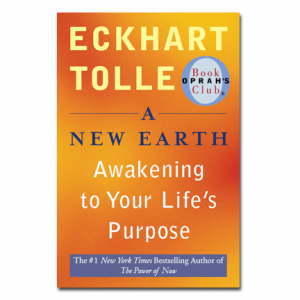To open Chapter 7, which is entitled “Finding Who You Truly Are,” author Eckhart Tolle delves into the origins of the phrase “know thyself,” which was inscribed in the shrine at the Oracle at Delphi.
Self knowledge
The problem with the way most people go about getting self- knowledge, though, is that unconscious people tend to merely add spiritual sounding concepts to the ideas they have about themselves floating around in their minds. And neither these concepts or ideas have anything to do with living in a true state of Being.We all have a sense of who we are, Tolle states, which we use to determine our needs and what matters to us. Within those boundaries, it is what has the power to disturb and upset us that we can use as the criterion to determine how deeply we know ourselves. The essence of who we are requires no belief, because every belief is an obstacle. This realization, according to the author, allows us to shine forth in the world.
Abundance As A Universal Law
Introduction To Abundance Thinking
To illustrate how beliefs can become obstacles, Tolle states that if lack has become a part of who we think we are, we will always experience lack. And whatever the world is withholding from us, that is what we are withholding from the world.
Whatever we think people are withholding from us, we should give it to them, and ask ourselves what service we can be to a given person or situation. Outflow determines inflow, that is the nature of abundance as a universal law.
By contrast, the idea of self-knowledge that many people have is based on content, which has little to do with who we actually are. And when we make judgments about what is good or bad for us, we leave out the important role that random events have in the process, for refusing to judge any event leaves us open to the interconnectedness that is the essence of life.
Not Minding What Happens

Not Minding What Happens
To illustrate how this works, Tolle uses the example of J. Krishnamuri, the Indian philosopher and spiritual teacher, who revealed his secret with the phrase “I don’t mind what happens.” This in turn aligned him with what is, allowing him to form a relationship with non-resistance.
Similarly, the Japanese Zen Master Hakuin was involved in a controversy in which a baby was born to a family who studied with him, and the master lost much of his credibility when a lie was told about who the father was. The lie was eventually revealed, but Hakuin remained neutral and non-reactive throughout the entire situation, responding to every development with the phrase “is that so?”
To attain this level of non-resistance, we must form a relationship with the Now, because making the present moment into a friend represents the end of ego. Without this relationship, the ego can only react to the present in a dysfunctional way, treating it as the means to and end, an enemy or a friend. Having a friendly relationship with the Now signals the arrival of presence and being present.
To explore another example of non-resistance, Tolle cites Stephen Hawking, who lives in a state of surrendered consciousness to deal with his disabilities. This opens up the vertical dimension of life, which is depth.
Life is always now

One factor in all this, Tolle states, is the paradox of time. Life is always lived in the moment of now, yet we cannot deny the reality of time, which is the horizontal dimension of life that allows us to function in the world at large.
Nonetheless, though, removing time from consciousness represents the elimination of ego, which is the only true spiritual practice.
The author also explores the idea of dreams, which he sees as a short-lived play of forms. The dreamer is absolute reality, in which forms come and go, but the ideal state is to be truly awake within the dream so that we can become consciousness itself.
All forms represent limitations, including the affluent world, which is a world of form. True joy, Tolle says, comes from being consciousness and rejecting forms and the possibility of becoming entangled in them.
The ego, however, will fight for forms by guarding against being diminished. Doing nothing and being non-reactive and non-resistant may feel uncomfortable and shrink us in size, but by becoming less we become more. By not defending form, we step out of it, undergo expansion and make room for true Being to come forward.
This state of Being brings with it a feeling of awe that is based on the depth that comes from within. It gives us an awareness of space which is based on nothing but awareness itself, which is the inner space of consciousness. This allows the universe to become aware of itself through us. And it also produces a stillness, a state of Being that is also God and is the essence of who we are.
Don’t Forget to check out the other Chapters.
A New Earth By Eckhart Tolle Chapter by Chapter Summary Chapter 2: Ego The Current State of Humanity
A New Earth By Eckhart Tolle Chapter by Chapter Summary Chapter 3: The Core of Ego
A New Earth By Eckhart Tolle Chapter by Chapter Summary Chapter 5: The Pain-Body
A New Earth By Eckhart Tolle Chapter by Chapter Summary Chapter 6: Breaking Free
A New Earth By Eckhart Tolle Chapter by Chapter Summary Chapter 8: The Discovery Of Inner Space
A New Earth By Eckhart Tolle Chapter by Chapter Summary Chapter 9: Your Inner Purpose
A New Earth By Eckhart Tolle Chapter by Chapter Summary Chapter 10: A New Earth
– Self Help Robot